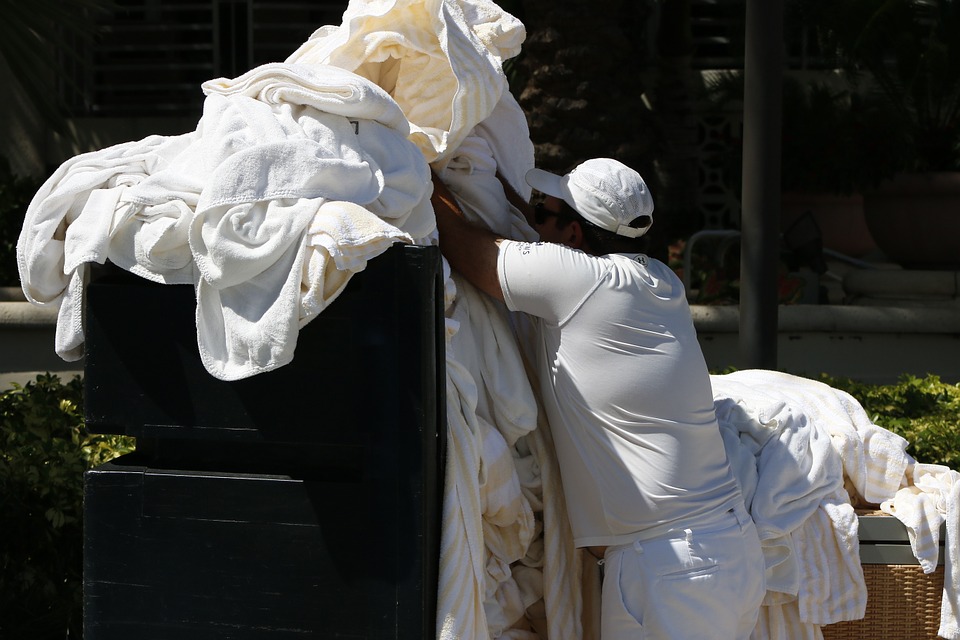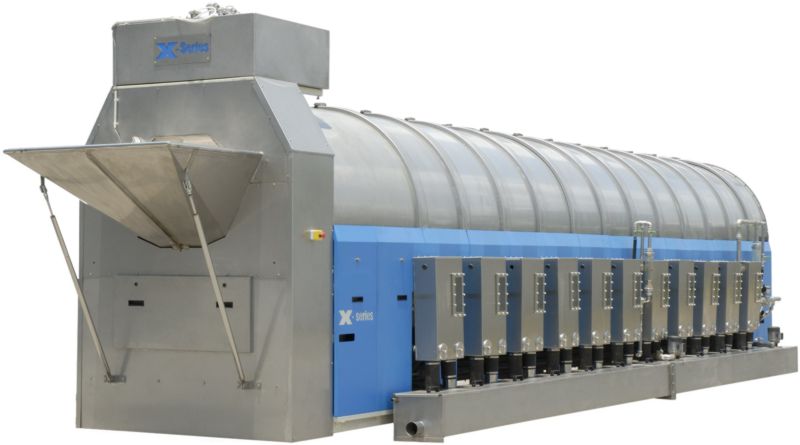Important Benefits of a Barrier Washer in your Healthcare Laundry

Important Benefits of a Barrier Washer in your Healthcare Laundry
Hospitals, surgery units, long term care units and other healthcare facilities all conjure up certain images and emotions in everyone but one thing that’s not usually at the top of those lists are the cleanliness of the linens. Patients are literally surrounded in hospital linens for the length of their time there. They spend the entirety of their stay in hospital gowns while being tucked in the sheets and blankets provided.
Therefore it makes sense to ensure that the goods are properly cleaned, dried and transported to avoid cross contamination. Using the proper chemicals, water temperature, and mechanical action are all necessary to properly clean goods but a healthcare laundry should go one step further by using barrier machines to ensure that germs from soiled goods are kept away from the clean.
Picture this: A patient’s sheets are stripped off the bed and placed in a bin for contaminated linens. They are then bagged and transported to the laundry where a laundry worker takes them from the bags and places them in the washer. Standard protocol is for the worker to wear gloves to avoid personal contamination. The door is closed, the wash cycle selected and the start button pressed. Of course the worker has also likely touched other items as well. While the gloves protect the worker from germs nothing protects the machine. The germs from the linens have been carried across the rim of the washer during loading, the handle, the cycle button, the stop button and anything else the worker may have inadvertently touched. Most facilities would now spray the areas touched with disinfectant in an effort to sanitize the front of the washer. Hopefully, the disinfectant is strong enough, enough was used and all surfaces were sprayed because when the worker returns at the end of the cycle to put the goods in the dryer they have to touch the handle and drag the linens back over
the rim to put them in a cart.
All this can be avoided and there would be no question of cross contamination by using a barrier washing machine. When it comes to cleaning hospital linen common sense indicates that everything that comes in contact with the goods should be hygienically clean to add another protective layer.
What is a barrier machine you ask? It’s a magical washing machine designed for the sole purpose of keeping soiled and clean goods physically separated during the wash phase.
For very large laundries the best type of barrier machine is also known as a tunnel washer or continuous batch washer. These large washers have soiled linens placed in one end of a long tunnel and they are moved through the washer by an Archimedes screw. This screw separates the load into batches. Water and chemicals come from the other end, in the opposite direction of the goods so every time the laundry goes into the next pocket cleaner and cleaner water is used. These machines are so large that the soiled goods are in one end of the room while the cleaned goods are at the opposite end.
For smaller laundries, or smaller loads, there are pony barrier washers. These machines are made to be built into a wall with a clean laundry room on one side and soiled linen room on the other. It has two doors, one on the clean side and the other on the dirty side. Only one door can be opened at a time so when a worker is loading dirty laundry on the soiled side, the door cannot be opened on the clean side, preventing germs from contaminating the clean side of the laundry. Another typical feature in a laundry with barrier or pass-through machines is higher air pressure on the clean side of the laundry, forcing any air movement to go from the clean side to the soil side to further reduce the opportunity for cross contamination.
The laundry is loaded on the dirty side, the door is closed, program selected and start button pressed. Once the wash and extract cycles are finished running a worker on the clean side of the laundry removes the laundry from the washer. No germs from the soil side have touched the clean side of the machine.
Safe handling procedures still need to be practiced, of course, but adding a barrier machine to a healthcare laundry adds another layer of protection and safety for not only patients but healthcare and laundry workers as well.


